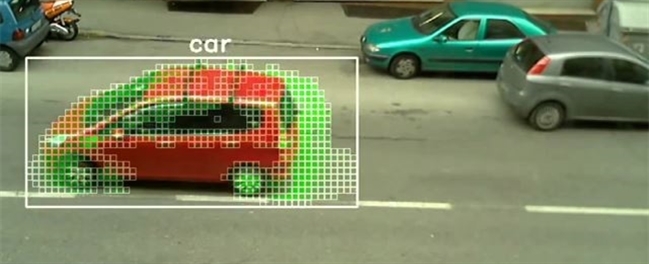
The population of our country is approximately 80 million people, and the number of vehicles in traffic is around 20 million vehicles. Approximately 300.000 fatal-injury accidents happen every year.
There are 172 tunnels in Turkey, 40 of which are double tube tunnels. Dozens of tunnels are currently under construction. Approximately 1200 fatal-injury accidents happen inside the tunnels every year. In the 180 accidents that have occurred since the opening of the Bolu Tunnel alone, 9 people were killed and 130 people were injured.
The majority of the accidents that occur inside tunnels are caused by excessive speed. Apart from this, accidents occur due to reasons such as improper passing, rear collision, parking, drunk driving, not driving in its own lane, dropping off passengers, parking, not taking measures at the accident scene, objects falling on the road, fire, vehicles driving in the opposite direction, excessively high vehicles etc.
There is a very high probability of a second incident following any event that occurs inside the tunnel. Long-term disruption of traffic on single-tube roads is one of the significant problems of tunnels.
You can review the Tunnel Security Measures under the following topics:
A.1. Height Control
A.2. Restriction on Dangerous Vehicles
B.1. Cameras
B.2. Automatic Detection of Events
B.3. Linear Heat Detector
B.4. Door and Cabinet Alarm Detection
C.1. Exits
C.2. Normal and Emergency Lighting
C.3. Low Level Lighting
C.4. Exit Sirens
D.1. Emergency Phones
D.2. Public Address System
D.3. Cell Phone Transmission
D.4. Radio Broadcasting
D.5. Variable Message Signs
E.1. Jet fans and Smoke Evacuation System
F.1. Fire Hydrants
F.2. Fire Hoses
F.3. Extinguishers
F.4. Water Tanks
F.5. Fire Extinguishing System
F.6. Drainages
G.1. Back-Up Power Supplies
G.2. UPS
G.3. Redundant Control
H.1. Emergency Response Team
H.2. Control Center
H.3. Incident Management
In this article, we will talk about how to allow fire detection systems to take faster actions in the prevention of incidents by assigning slightly more tasks to camera systems.
The data collected from thermal and normal camera systems can be converted to more stable data in line with the developments in the field of software. Due to its increased accuracy ratio, Video Content Analysis Systems (VCA) have begun to be mentioned in the regulations and standards.
1.License Plate Recognition SystemIt is installed by placing one camera on each lane at tunnel entrances. The license plate numbers of all passing vehicles are recorded in the database. The vehicles involved in any incident in the tunnel are recorded. The system reports the stolen and investigated vehicles to the security forces. It can distinguish the makes, models and colors of vehicles. It checks the registered make, model and color for the license plate number from the police database, and automatically inspects whether it is a stolen license plate/vehicle.
2.Fixed Speed Violation Detection SystemChecking the speed of all passing vehicles at tunnel entrances and inside tunnels will be one of the most efficient methods in the prevention of accidents. According to the statistics, the majority of accidents are caused by excessive speed. The speeds and license plate numbers of all vehicles must be recorded. Together with laser or radar systems, fixed systems record vehicle speeds and license plate numbers and simultaneously check whether there is a vehicle on search from the Police database, and report it to the security forces along with the relevant evidence.
3.Speed Corridor Speed Violation Detection SystemA license plate recognition system is installed at the tunnel entrance and tunnel exit. The length of the tunnel is measured and recorded in the system. When a vehicle's license plate number is scanned at the tunnel entrance, the current time is recorded. When the same vehicle exits from the tunnel, its license plate number is recorded again and the current time is recorded. The speed of the vehicle is calculated by dividing the difference between the 2 times by the length of the tunnel. If such speed is above the permitted speed limit, the system reports it to the security forces.
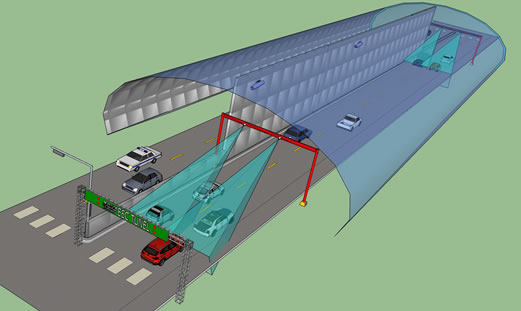
Camera systems can be used to classify and count vehicles to determine asphalt renewal times in tunnels. The system can automatically classify and count motorcycles, cars, minibuses, trucks, vans, lorries and buses.
5.Flame and Smoke Detection SystemToday, thermal cameras and normal cameras can detect flame and smoke by using various techniques.
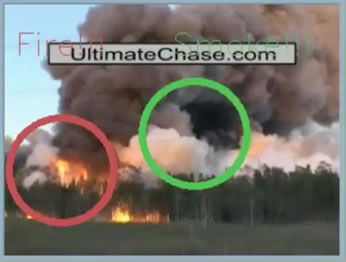
The height of all moving objects can be measured by cameras. Perspective corrections can be made automatically and detections can be made with high accuracy.
7.Wrong Lane Changing Vehicle-Incorrect Parking-Existing Object-Standing Object-Moving Object-Disappearing Object-Idle Object Detection and Object TrackingCameras can detect and track all movements inside the tunnel. They can generate special alarms in line with the needs.
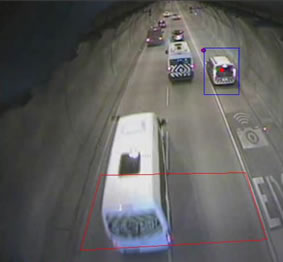
Camera systems can display all passing objects on the road according to their colors, sizes, directions and a combination of these characteristics. They can allow you to watch logs kept in a span of several days just in minutes.
9.Face Recognition SystemFace recognition accuracy rates in Camera Systems are increasing quickly. These systems provide the opportunity to record the people entering tunnels on foot or getting out of vehicles. It is even possible to operate face recognition systems for the people inside vehicles and achieve certain accuracy rates through good engineering.
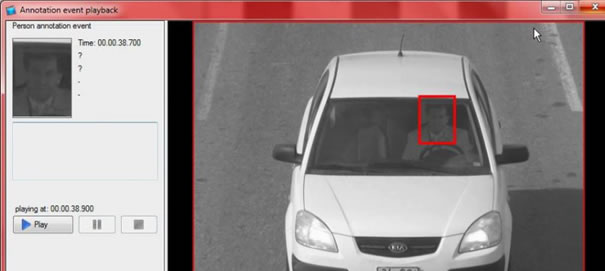
Camera systems can graphically offer data on vehicle densities and locations by time.
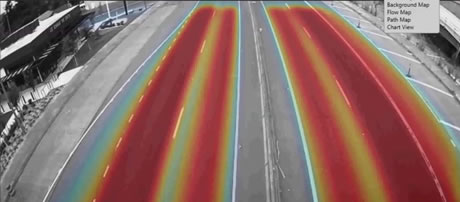
Footage can be simulated by using software. Thanks to the footage recorded, vehicle movements and driver behaviors can be calibrated in the simulation environment, and an almost-real study can be executed. With the assessments made as a result of the simulation, more consistent results can be obtained in terms of the capacity analysis and service level of the intersection.
All these analyses and footages can be kept on the Cloud. With the rapid reduction in Cloud Center costs, all systems will be quickly transferred to the Cloud environment. We think that only cameras, detectors, sensors, etc. will be used in the field and the entire operation will run on the Cloud in the future. Currently, all systems are trying to switch to the cloud architecture, and the architectures where these operations will be conducted in Data Centers through distributed architecture instead of on-site analysis are rapidly being developed.
The systems which are always said to be integrated, but which can be executed with very simple integrations in application projects, are being replaced by the systems that can operate in a more integrated way. Today, camera systems can be integrated with many known systems such as the Central Management Systems, Geographical Information Systems, Laser Radar (Lidar) and 3D Radar, Call Management System and Vehicle Tracking Systems etc. Many organizations can implement profitable, stable and large projects with real integration.
As it could be seen, camera systems can ensure many benefits in supporting fire detection systems in many applications inside tunnels, preventing incidents and shortening response times.